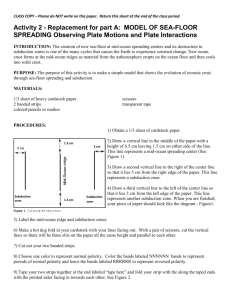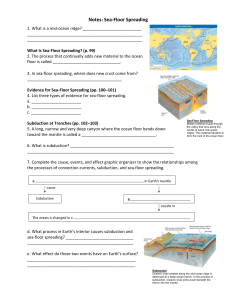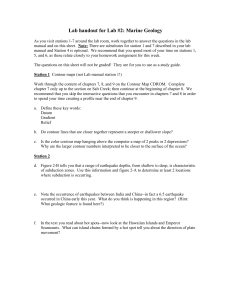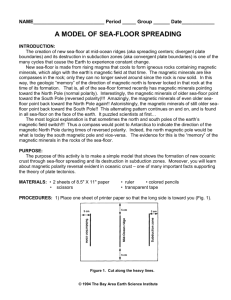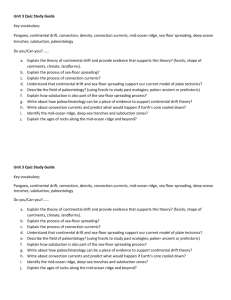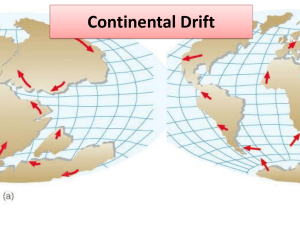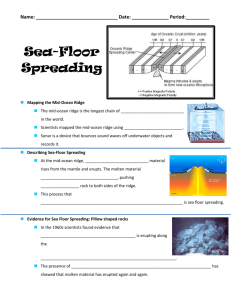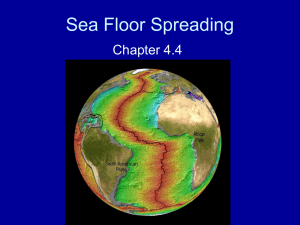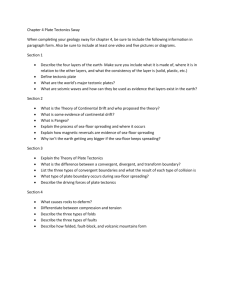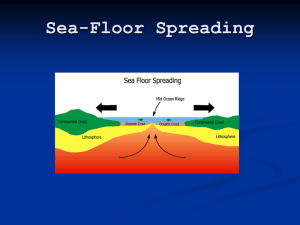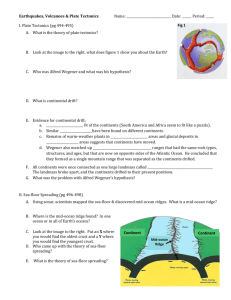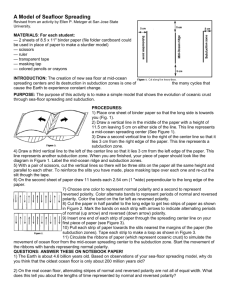Sea Floor Spreading Model Instructions
advertisement
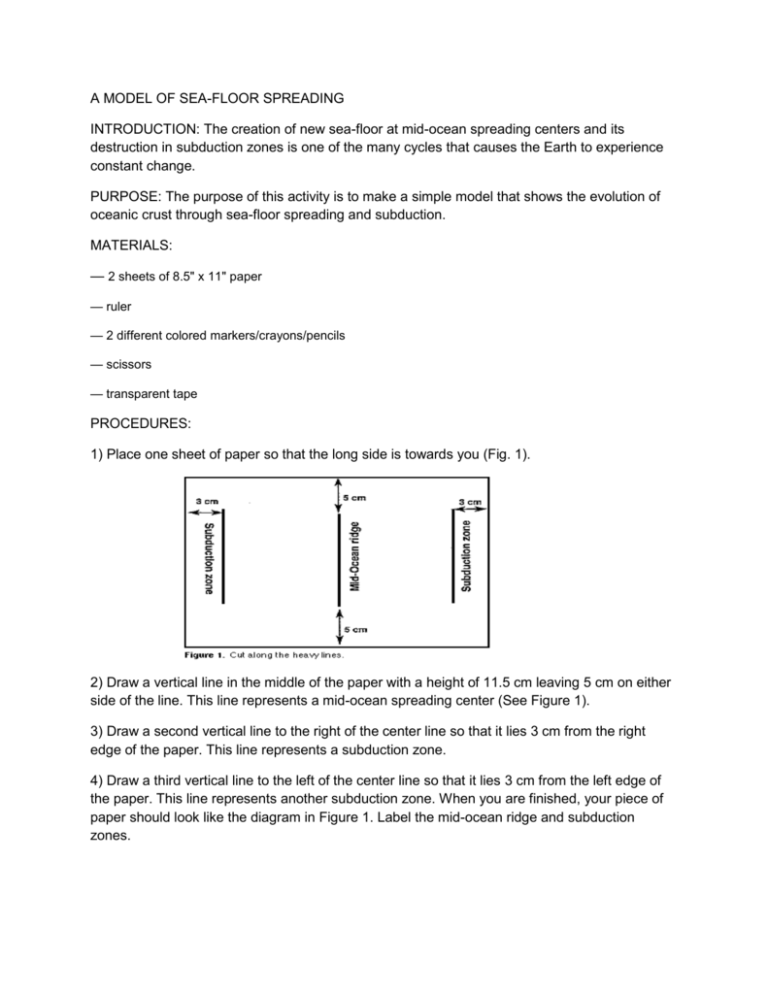
A MODEL OF SEA-FLOOR SPREADING INTRODUCTION: The creation of new sea-floor at mid-ocean spreading centers and its destruction in subduction zones is one of the many cycles that causes the Earth to experience constant change. PURPOSE: The purpose of this activity is to make a simple model that shows the evolution of oceanic crust through sea-floor spreading and subduction. MATERIALS: — 2 sheets of 8.5" x 11" paper — ruler — 2 different colored markers/crayons/pencils — scissors — transparent tape PROCEDURES: 1) Place one sheet of paper so that the long side is towards you (Fig. 1). 2) Draw a vertical line in the middle of the paper with a height of 11.5 cm leaving 5 cm on either side of the line. This line represents a mid-ocean spreading center (See Figure 1). 3) Draw a second vertical line to the right of the center line so that it lies 3 cm from the right edge of the paper. This line represents a subduction zone. 4) Draw a third vertical line to the left of the center line so that it lies 3 cm from the left edge of the paper. This line represents another subduction zone. When you are finished, your piece of paper should look like the diagram in Figure 1. Label the mid-ocean ridge and subduction zones. 5) With a pair of scissors, cut the vertical lines so there will be three slits on the paper all the same height and parallel to each other. To reinforce the slits you have made, place tape over each one and re-cut the slit though the tape. 6) On the second sheet of paper draw 11 bands each 2.54 cm (1 "wide) perpendicular to the long edge of the paper. 7) Choose one color to represent normal polarity and a second to represent reversed polarity. Color the band on the far left as reversed polarity. Color alternate bands to represent periods of normal and reversed polarity. 8) Cut the paper in half parallel to the long edge to get two strips of paper as shown in Figure 2. Mark the bands on each strip with arrows to indicate alternating periods of normal (up arrow) and reversed (down arrow) polarity. 9) Insert one end of each strip of paper through the spreading center line on your first piece of paper (see Figure 3). 10) Pull each strip of paper towards the slits nearest the margins of the paper (the subduction zones). Tape each strip to make a loop as shown in Figure 3. 11) Circulate the ribbons of paper (which represent oceanic crust) to simulate the movement of ocean floor from the mid-ocean spreading center to the subduction zone. QUESTIONS: 1) The Earth is about 4.6 billion years old. Based on observations of your sea-floor spreading model, why do you think that the oldest ocean floor is only about 200 million years old? 2) On the real ocean floor, alternating stripes of normal and reversed polarity are not all of equal width. What does this tell you about the lengths of time represented by normal and reversed polarity?
